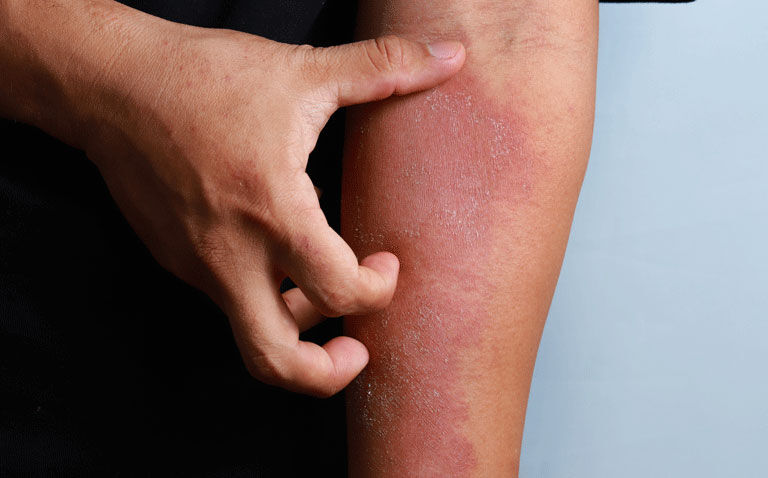Lebrikizumab targets interleukin (IL)-13 and in combination with topical steroids appears effective in moderate to severe atopic eczema
Lebrikizumab in combination with low to mid-potency topical corticosteroids is an effective therapeutic approach for adults with moderate to severe atopic eczema according to the results of a randomised, placebo-controlled trial by an international research group.
Atopic eczema (AE) is a chronic, relapsing and remitting skin disease which, according to one UK-based study, affects up to 16.5% of children aged 2 years and 2.8% of adults aged 30-39. Moderate to severe disease symptoms include intense itch, sleep disturbance together with skin pain, affecting sleep, daily activities and occurs in 28.9% and 11% of adults, respectively. Both emollients and topical corticosteroids (topical steroids) are used to manage mild to moderate disease whereas systemic therapy and or phototherapy is recommended for those with more severe disease. In recent years, biologic therapies such as dupilumab have emerged for the treatment of individuals with moderate to severe disease.
Another recently introduced biologic is the monoclonal antibody lebrikizumab, which targets interleukin (IL)-13, a pro-inflammatory Th2 cytokine central to AE pathogenesis and which is an important driver of the clinical manifestations of AE. Although lebrikizumab has been shown to provide a rapid and dose-dependent efficacy across a broad range of clinical manifestations in adult patients with moderate to severe AE, no studies have examined the value of the drug in combination with topical steroids, which is reflective of real-life practice.
Consequently, in the current study, researchers randomised eligible patients, i.e., with a diagnosis of moderate-to-severe AE, 2:1 to lebrikizumab and topical steroids or placebo and topical steroids. An initial lebrikizumab loading dose of 500 mg was administered subcutaneously, at baseline and week 2, followed by 250 mg once every two weeks. The primary efficacy endpoint was the percentage of patients with an investigator’s Global Assessment scale (IGA) score of 0 or 1 (i.e., clear or almost clear) and a 2 or more point improvement from baseline at week 16. A key secondary objective was the percentage of patients achieving 75% improvement in EASI (EASI-75) at week 16.
Lebrikizumab and atopic eczema outcomes
A total of 211 patients with mean age of 37.2 years (48.8% female) were randomised to lebrikizumab and topical steroids (145) or placebo and steroids.
After 16 weeks of treatment, an IGA score of 0 or 1 with a 2-point or more reduction from baseline was achieved by 41.2% of those receiving lebrikizumab compared to 22.1% on placebo (p = 0.01), although a statistically significant difference was observed as early as week 8.
There was also a significantly higher proportion of lebrikizumab patients achieving an EASI75 (69.5% vs 42.2%, p < 0.01) and this time, a statistically significant difference was achieved and maintained from as early as week 4 and maintained through week 16.
The authors concluded on how lebrikizumab in combination with topical steroids was superior to topical steroids alone, adding how safety data was consistent with previously reported AE trials.
Citation
Simpson EL et al. Efficacy and Safety of Lebrikizumab in Combination With Topical Corticosteroids in Adolescents and Adults With Moderate-to-Severe Atopic DermatitisA Randomized Clinical Trial (ADhere). JAMA Dermatol 2023










